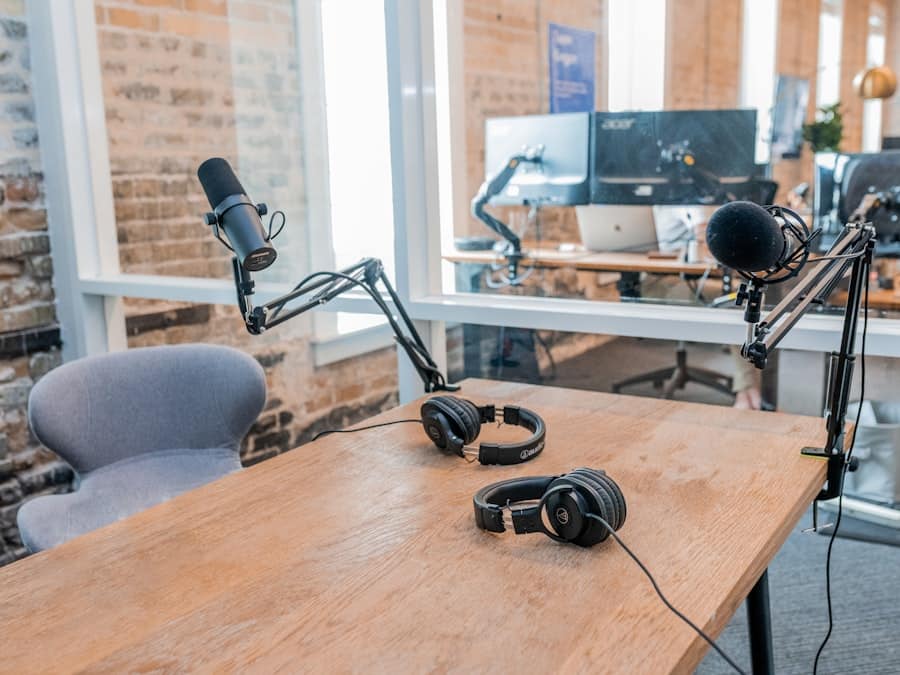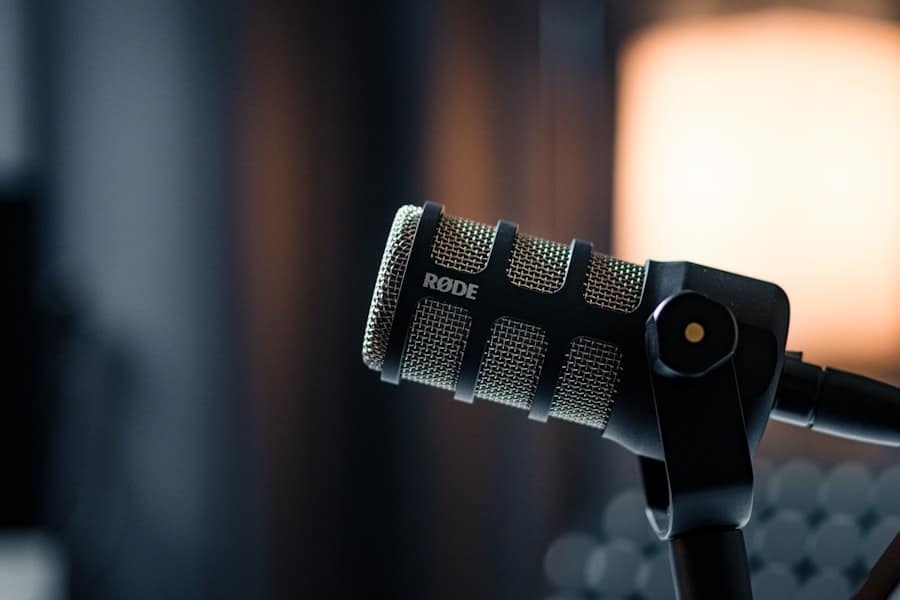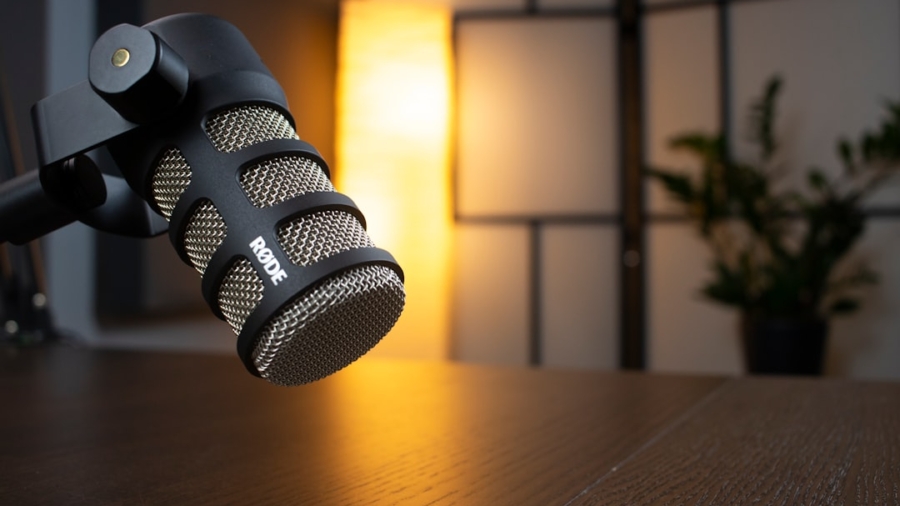Podcasting has emerged as a powerful medium for storytelling, education, and entertainment, allowing creators to reach audiences across the globe. At its core, a podcast is a series of spoken-word content, audio episodes, or discussions that can be streamed or downloaded. The beauty of podcasting lies in its accessibility; anyone with a microphone and an idea can create a show.
This democratization of media has led to a diverse array of genres, from true crime to personal finance, catering to niche interests and broad topics alike. The format of podcasts can vary significantly, ranging from solo monologues to multi-host discussions and even scripted narratives. This flexibility allows creators to express their unique voices and styles.
Additionally, the episodic nature of podcasts encourages listeners to engage with content over time, fostering a sense of community and loyalty. Understanding the basics of podcasting involves recognizing not only the technical aspects but also the storytelling elements that captivate audiences. Successful podcasters often blend informative content with engaging narratives, creating an experience that resonates with listeners on multiple levels.
Key Takeaways
- Podcasting is a form of digital media that involves creating and distributing audio content for an audience to listen to on various platforms.
- When choosing equipment for your podcast studio, consider factors such as microphone quality, recording software, and soundproofing materials.
- Setting up your podcast studio space involves finding a quiet and comfortable area, arranging your equipment for optimal sound quality, and considering the acoustics of the room.
- Recording and editing your podcast requires attention to detail, including microphone technique, audio levels, and post-production editing for a polished final product.
- Creating engaging content for your podcast involves understanding your target audience, developing a unique angle or perspective, and delivering valuable and entertaining episodes.
Choosing the Right Equipment for Your Podcast Studio
Selecting the appropriate equipment is crucial for producing high-quality audio that can captivate your audience. At the heart of any podcasting setup is the microphone. Dynamic microphones, such as the Shure SM7B, are popular among podcasters due to their ability to capture clear sound while minimizing background noise.
Conversely, condenser microphones, like the Audio-Technica AT2020, are sensitive and can capture a broader range of frequencies, making them ideal for voice work in quieter environments. The choice between these types often depends on your recording space and personal preference. In addition to microphones, other essential equipment includes audio interfaces, headphones, and recording software.
An audio interface serves as a bridge between your microphone and computer, converting analog signals into digital data. Popular options include the Focusrite Scarlett series, which offers excellent sound quality and user-friendly features. High-quality headphones are also vital for monitoring audio during recording and editing; closed-back models like the Audio-Technica ATH-M50x help isolate sound and prevent bleed.
Finally, selecting the right recording software—such as Audacity or Adobe Audition—can significantly impact your editing process and overall production quality.
Setting Up Your Podcast Studio Space

Creating an effective podcast studio space is essential for achieving optimal sound quality and comfort during recording sessions. The first step in setting up your studio is choosing an appropriate location. Ideally, this space should be quiet and free from distractions.
Many podcasters opt for a dedicated room or corner in their home that can be soundproofed or treated to minimize echo and background noise. Using acoustic panels or foam can help absorb sound reflections, creating a more controlled environment for recording. In addition to soundproofing, consider the layout of your studio.
Positioning your microphone at an appropriate height and distance from your mouth is crucial for capturing clear audio. A boom arm can help achieve this by allowing you to adjust the microphone’s position easily. Furthermore, organizing your equipment in a way that promotes efficiency during recording sessions can enhance your workflow.
Having all necessary tools within reach—such as notes, scripts, or sound effects—can streamline the process and reduce interruptions.
Recording and Editing Your Podcast
Recording your podcast is where all the planning and preparation come together. Before hitting the record button, it’s essential to conduct a sound check to ensure that levels are balanced and that there are no technical issues. During recording, maintaining a conversational tone can help engage listeners; this often involves practicing good microphone technique, such as speaking directly into the mic and maintaining consistent volume levels.
It’s also beneficial to have a clear outline or script to guide the discussion while allowing for natural flow. Once recording is complete, the editing phase begins. This process involves refining the audio by removing mistakes, awkward pauses, or background noise that may detract from the listening experience.
Software like Audacity offers various tools for editing audio tracks, including noise reduction features and equalization options to enhance sound quality. Additionally, incorporating music or sound effects can add depth to your podcast; however, it’s crucial to ensure that any audio used is properly licensed or royalty-free to avoid copyright issues.
Creating Engaging Content for Your Podcast
The heart of any successful podcast lies in its content. Crafting engaging material requires a deep understanding of your target audience and their interests. Researching popular topics within your niche can provide inspiration and help you identify gaps in existing content that you can fill with your unique perspective.
Additionally, storytelling techniques can elevate your podcast by weaving narratives that resonate emotionally with listeners. This might involve sharing personal anecdotes or interviewing guests who bring valuable insights to the discussion. Moreover, structuring your episodes effectively can enhance listener engagement.
Consider incorporating segments such as Q&A sessions, listener feedback discussions, or thematic series that explore specific topics in depth over multiple episodes. This not only keeps content fresh but also encourages audience participation. Utilizing social media platforms to solicit questions or topic suggestions from listeners can further foster a sense of community and investment in your podcast.
Publishing and Promoting Your Podcast

Once your podcast episodes are recorded and edited, it’s time to publish them on a hosting platform. Popular podcast hosting services like Libsyn or Podbean provide the necessary infrastructure to distribute your episodes across various platforms such as Apple Podcasts, Spotify, and Google Podcasts. When publishing episodes, it’s important to create compelling titles and descriptions that accurately reflect the content while enticing potential listeners.
Promotion plays a critical role in growing your audience. Leveraging social media channels is an effective way to reach new listeners; sharing snippets of episodes or behind-the-scenes content can generate interest and encourage shares among followers. Collaborating with other podcasters through guest appearances or cross-promotions can also expand your reach by tapping into their established audiences.
Additionally, engaging with listeners through email newsletters or dedicated community forums can help build loyalty and encourage word-of-mouth referrals.
Connecting with Your Audience
Building a connection with your audience is essential for fostering loyalty and encouraging ongoing engagement with your podcast. One effective way to achieve this is by actively soliciting feedback from listeners through surveys or social media interactions. Understanding what resonates with your audience allows you to tailor future content to their preferences while demonstrating that you value their input.
Another strategy for connecting with your audience is through live events or virtual meet-and-greets. Hosting Q&A sessions or live recordings can create an interactive experience that deepens listener relationships. Additionally, creating a dedicated online community—such as a Facebook group or Discord server—can provide a space for fans to discuss episodes, share ideas, and connect with one another outside of the podcast itself.
Growing and Monetizing Your Podcast
As your podcast gains traction, exploring monetization options becomes increasingly relevant. There are several avenues for generating revenue from your podcast, including sponsorships, listener donations, merchandise sales, and premium content subscriptions. Sponsorships typically involve partnering with brands that align with your podcast’s theme; this requires building a solid listener base that attracts potential advertisers.
Listener donations through platforms like Patreon allow fans to support your work directly in exchange for exclusive content or perks such as early access to episodes or bonus material.
In conclusion, growing a podcast requires consistent effort in content creation, audience engagement, and strategic monetization approaches.
By focusing on quality production values and fostering connections with listeners, podcasters can build sustainable platforms that not only entertain but also generate income over time.
If you’re diving into the world of podcasting and have just read the “Beginner’s Guide to Building a Podcast Studio,” you might also be interested in exploring the technical side of content creation.
” This article provides insights into selecting the right laptop, which is crucial for editing and producing high-quality audio content. You can read more about it by visiting Best Laptops for Coding & Programming.
FAQs
What is a podcast studio?
A podcast studio is a dedicated space for recording and producing podcasts. It typically includes equipment such as microphones, headphones, audio interfaces, and recording software.
Why do I need a podcast studio?
Having a dedicated podcast studio can improve the quality of your recordings and provide a professional environment for producing your podcast. It can also help minimize background noise and distractions.
What equipment do I need for a podcast studio?
Essential equipment for a podcast studio includes microphones, headphones, a mixer or audio interface, recording software, and acoustic treatment for the room. Optional equipment may include a soundproof booth, pop filters, and microphone stands.
How do I set up a podcast studio?
Setting up a podcast studio involves choosing a suitable location, installing acoustic treatment, arranging equipment for optimal sound quality, and testing the setup for recording and monitoring.
What are some tips for building a podcast studio on a budget?
To build a podcast studio on a budget, consider purchasing used equipment, DIY acoustic treatment, and utilizing free or affordable recording software. It’s also important to prioritize essential equipment and gradually upgrade as your budget allows.

